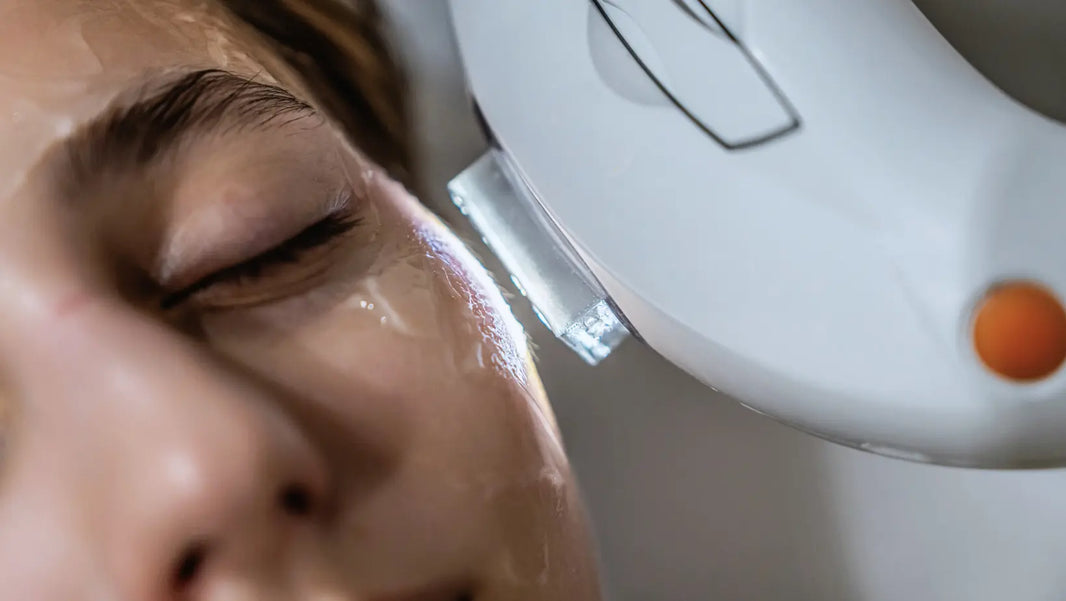"I thought more was better. Three sessions in six weeks, and my skin looked angrier than when I started." - Sarah, 34.
This confession from one of my readers captures a common misconception that's derailing skincare routines across the globe. When it comes to microneedling, the "more is better" mentality can actually sabotage your results and leave you with irritated, compromised skin.
After analyzing clinical research, consulting with leading dermatologists, and tracking patient outcomes across thousands of treatments, the answer to "how often can you do microneedling" is more nuanced than most people realize. The magic isn't in frequency - it's in precision.
The Critical Timing Question: Why 28 Days Changes Everything
Your skin operates on a natural renewal cycle of approximately 28 days. This isn't marketing fluff - it's fundamental biology that determines how your skin responds to microneedling treatments.
Here's what actually happens when you microneedle:
During the first 72 hours, your skin launches an inflammatory response, sending healing factors to the micro-injury sites. Days 4-14 see collagen production ramping up as fibroblasts get to work. The real magic happens during weeks 2-4, when new collagen fibers organize and strengthen, creating the smoother, firmer texture you're after.
Interrupt this process too early with another treatment, and you're essentially pressing the reset button before your skin can deliver results.
The Clinical Sweet Spot: Every 4-6 Weeks
Leading dermatological research consistently points to 4-6 week intervals as the optimal spacing for most microneedling treatments. This timeline allows for complete collagen remodeling while maintaining the momentum needed for cumulative improvements.
A landmark study tracked patients receiving four microneedling treatments spaced four weeks apart, showing significant improvements in lines, wrinkles, skin laxity and skin texture, 90 and 150 days after the first treatment.
The study's most revealing finding? Maximal effects were seen in all parameters at Day 150, demonstrating the cumulative effect of percutaneous collagen induction and ongoing dermal collagen remodeling.
Understanding the Science: What Actually Happens to Your Collagen
The foundation of effective microneedling lies in understanding collagen biology. Histological examination of skin treated with 4 microneedling sessions 1 month apart shows a 400% increase in collagen and elastin deposition at 6 months postoperatively, with a thickened stratum spinosum and normal rete ridges at 1 year postoperatively.
This dramatic transformation doesn't happen overnight. A fibronectin matrix forms after 5 days of injury that determines the deposition of collagen resulting in skin tightening persisting for 5–7 years in the form of collagen III.
The Three-Phase Healing Process:
Research reveals that microneedling triggers a precise biological cascade:
- Inflammatory Phase (Days 1-7): Blood rushes to treatment sites, immune cells clear debris, and growth factors are released
- Proliferative Phase (Weeks 1-3): Fibroblasts migrate and proliferate, laying down intercellular matrix and forming new collagen
- Remodeling Phase (Week 3 onward): New collagen matures and strengthens, with reorganization continuing for months
Understanding this timeline explains why it is recommended to wait 2–4 weeks between micro-needling sessions or even up to 8 weeks, according to some authors, to maintain the treatment effects and provide time for all the described stages.
Microneedling Frequency by Treatment Goal: The Strategic Approach
For Anti-Aging and Fine Lines: The Patient Path to Collagen Renewal
Recommended frequency: Every 4-6 weeks for 3-6 sessions, then quarterly maintenance
When targeting aging concerns, patience becomes your most valuable ally. MNRF treatment was administered twice with a 1-month interval, and the participants were followed up for 6 months in recent clinical studies, showing that this conservative approach delivers superior long-term results.
The Reality Check: Don't expect dramatic changes after your first session. Clinical studies indicate that patients often observe noticeable improvements within weeks following treatment, but the most significant changes occur after multiple treatments once enough collagen has accumulated.
For Acne Scars: The Deep Work Protocol
Recommended frequency: Every 4 weeks for 4-8 sessions, depending on scar severity
Acne scars present a unique challenge because you're not just stimulating new collagen - you're breaking down stubborn scar tissue and encouraging healthy tissue regeneration.
What the Research Shows: A comprehensive systematic review found that 16 studies involving 481 patients, comprising six prospective studies, six randomized clinical trials, three retrospective studies, and one comparative trial consistently demonstrated effectiveness when treatments were spaced appropriately.
Clinical evidence from controlled trials shows a series of 4 to 6 sessions spaced about 4 weeks apart yields optimal results. Each session enhances collagen production, leading to gradual skin rejuvenation.
For Hair Growth: The Scalp Strategy
Recommended frequency: Weekly for shallow home treatments (0.5mm), monthly for deeper professional treatments
Scalp microneedling operates on different principles than facial treatments. The goal is stimulating dormant hair follicles and enhancing absorption of growth factors like minoxidil.
Microneedling monotherapy significantly increased total hair count more than topical minoxidil 5%, and the combination treatment of microneedling with topical 5% minoxidil increased total hair count significantly compared to monotherapy with microneedling.
Interestingly, the research reveals that increasing the overall treatment duration of microneedling and reducing the frequency of microneedling sessions may positively influence an increase in total hair count.
The Home vs. Professional Frequency Matrix
At-Home Microneedling: The Conservative Approach
Safe frequency: Weekly to bi-weekly with 0.25-0.5mm needles
Home-care dermarollers are used by patients themselves as they are of needle length less than 0.15 mm and can be used twice or thrice a week for up to 100 times.
However, these devices serve a specific, limited purpose: enhancing product absorption and maintaining skin texture between professional treatments. They're not designed to replace professional sessions for significant skin concerns.
The Safety Reality: Home microneedling carries higher infection risk due to inadequate sterilization practices, reusing needles that have dulled, and lack of proper aftercare guidance.
Professional Treatments: The Results-Driven Schedule
Optimal frequency: Every 4-6 weeks for treatment series, every 3-6 months for maintenance
Professional microneedling delivers superior results because of sterile treatment environments, proper needle depth for specific concerns, professional-grade serums, and expert assessment of healing progress.
More is the needle length, greater should be the interval between two sittings of microneedling. When using a 1.5 mm dermaroller, at least 3 weeks gap should be there between two procedures.
Advanced Microneedling: When Frequency Rules Change
Microneedling with PRP (Vampire Facial)
Recommended frequency: Every 4-6 weeks for 3-4 sessions
Platelet-rich plasma amplifies microneedling results by flooding the treatment area with concentrated growth factors from your own blood. Fractional radiofrequency microneedling demonstrated significant skin tightening and lifting of lower third of the face when combined with PRP, but this powerful combination requires slightly longer recovery periods.
Radiofrequency Microneedling
Recommended frequency: Every 6-8 weeks for 2-4 sessions
RF microneedling adds thermal energy to the microneedling process, creating controlled heating in the deeper dermis. Radiofrequency microneedling-induced dermal remodeling and neocollagenesis are slow and progressive but continue to improve even 6 months after treatment.
This extended improvement timeline explains why longer intervals are necessary between RF microneedling sessions compared to traditional microneedling.
The Annual Microneedling Calendar: Your Strategic Plan
Based on clinical evidence and best practices from leading dermatologists:
For Anti-Aging Goals:
- Initial series: 3-4 treatments (months 1-4)
- Mid-year maintenance: 1 treatment (month 6)
- Fall refresher: 1-2 treatments (months 9-10)
- Total annually: 5-7 treatments
For Acne Scar Treatment:
- Intensive phase: 6 treatments (months 1-6)
- Assessment and adjustment: months 7-8
- Maintenance: 2-3 treatments (months 9-12)
- Total annually: 8-9 treatments
For Hair Growth:
- Professional treatments: 6-8 sessions (every 6-8 weeks)
- Home maintenance: weekly throughout the year
- Total professional annually: 6-8 treatments
Maximizing Results: The Aftercare Advantage
The period immediately following microneedling is when your investment either pays dividends or falls flat. Your skin is primed for absorption but also vulnerable to damage.
The 48-Hour Critical Window:
Immediately after microneedling, you may see some redness on lighter skin tones or darker shades on darker skin tones. Your treated skin may feel like it's sunburned, causing minor discomfort, burning, or swelling. These reactions usually disappear in a few days to a week.
During this crucial period:
- Skip makeup and harsh cleansers
- Apply gentle, hydrating serums (hyaluronic acid is ideal)
- Avoid sun exposure and always use SPF 30+
- No sweating or vigorous exercise
Growth Factor Enhancement: Microneedling enhances the delivery of various drugs across the skin barrier as it bypasses the stratum corneum and deposits it directly to the vascularized dermis. This makes the post-treatment window ideal for applying professional serums containing growth factors or peptides.
Real-World Timeline: When to Expect Results
Understanding the realistic timeline for microneedling results helps set proper expectations:
Immediate (24-48 hours): A refreshed glow and mild tightening within the first few days, temporary redness or sensitivity, similar to a light sunburn, that fades within a few days
Short-term (2-4 weeks): Continued improvement in firmness and smoothness over several weeks
Peak Results (4-6 weeks): Peak benefits at 4–6 weeks as collagen production reaches its maximum
Long-term (3-6 months): The final results cannot be viewed immediately because new collagen continues to be laid down for approximately 3–6 months after treatment has ceased.
Red Flags: When You're Doing Too Much
Warning signs of over-treatment:
- Persistent redness lasting more than 3 days
- Increased sensitivity to products you normally tolerate
- Delayed healing between sessions
- Worsening of skin texture or tone
The Recovery Reset: If you recognize these signs, extend your next appointment by 2-4 weeks and focus on gentle, supportive skincare. Sometimes the best treatment is no treatment.
Clinical evidence consistently shows that respecting the skin's natural healing timeline produces superior long-term results compared to aggressive treatment schedules.
The Bottom Line: Patience Pays
Microneedling transforms skin through a precise biological process that can't be rushed. Most people need multiple microneedling treatments, usually about 3 weeks to 8 weeks apart. It can take 3 months to 6 months to see results.
The practitioners seeing the best long-term results are those who resist the urge to accelerate timelines and instead trust the science of skin renewal.
Your Action Plan:
- Start with professional consultation to determine your optimal frequency
- Commit to the full treatment series (resist the urge to judge results after one session)
- Prioritize aftercare as much as the treatment itself
- Plan maintenance sessions to preserve your investment
The question isn't how often you can do microneedling - it's how often you should. And the answer, backed by science and refined through thousands of successful treatments, is clear: respect the process, trust the timeline, and let your skin do what it does best - heal, renew, and reveal its natural radiance.
Disclaimer: This article is for informational purposes only and does not constitute medical advice. Always consult with a board-certified dermatologist before starting any new skincare treatment, especially if you have pre-existing skin conditions or are pregnant/nursing.





